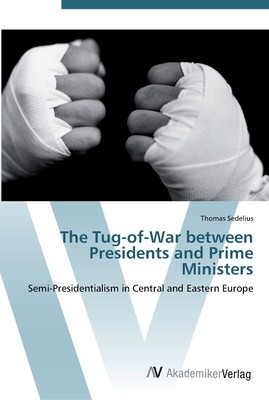
- We will send in 10–14 business days.
- Author: Thomas Sedelius
- Publisher: AV Akademikerverlag
- ISBN-10: 3639437187
- ISBN-13: 9783639437188
- Format: 15.2 x 22.9 x 1.8 cm, minkšti viršeliai
- Language: English
- SAVE -10% with code: EXTRA
The Tug-of-War between Presidents and Prime Ministers (e-book) (used book) | bookbook.eu
Reviews
Description
Revision with unchanged content. Since the fall of the Soviet Union, authoritarian presidents have dominated politics in many post-Soviet countries. However, while strong-man rule seems to prevail, e.g. in Central Asia, Russia, and Belarus, recent popular upheavals in Ukraine, Georgia, and Kyrgyzstan, suggest that authoritarian presidentialism may not go unchallenged. Presidential power and constitutional prerogatives are essential components in this struggle between authoritarianism and democratisation. This study deals with institutional conflict in two forms of semi-presidentialism (premier-presidential and president-parliamentary systems) adopted among the majority of the post-communist countries in Eastern Europe and the former Soviet republics. The study concluds that premier-presidential systems have great governance potential provided that the party systems develop and consolidate. Regarding the president-parliamentary systems, however, the results are less encouraging. It is even argued in the thesis that the adoption of this system remains as one of the obstacles for democratic reforms in many post-Soviet states.
EXTRA 10 % discount with code: EXTRA
The promotion ends in 22d.18:22:47
The discount code is valid when purchasing from 10 €. Discounts do not stack.
- Author: Thomas Sedelius
- Publisher: AV Akademikerverlag
- ISBN-10: 3639437187
- ISBN-13: 9783639437188
- Format: 15.2 x 22.9 x 1.8 cm, minkšti viršeliai
- Language: English English
Revision with unchanged content. Since the fall of the Soviet Union, authoritarian presidents have dominated politics in many post-Soviet countries. However, while strong-man rule seems to prevail, e.g. in Central Asia, Russia, and Belarus, recent popular upheavals in Ukraine, Georgia, and Kyrgyzstan, suggest that authoritarian presidentialism may not go unchallenged. Presidential power and constitutional prerogatives are essential components in this struggle between authoritarianism and democratisation. This study deals with institutional conflict in two forms of semi-presidentialism (premier-presidential and president-parliamentary systems) adopted among the majority of the post-communist countries in Eastern Europe and the former Soviet republics. The study concluds that premier-presidential systems have great governance potential provided that the party systems develop and consolidate. Regarding the president-parliamentary systems, however, the results are less encouraging. It is even argued in the thesis that the adoption of this system remains as one of the obstacles for democratic reforms in many post-Soviet states.


Reviews